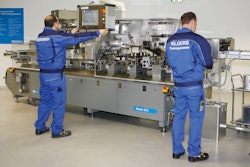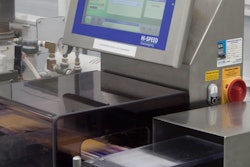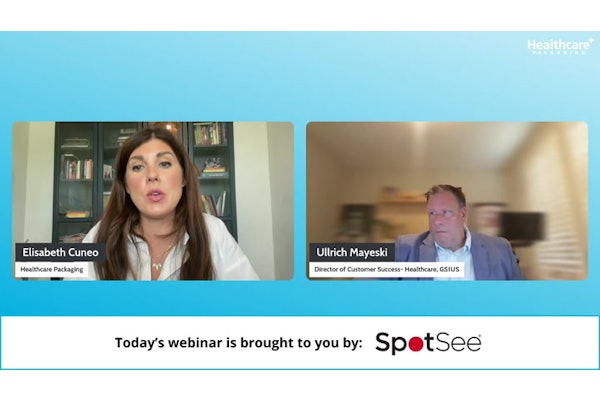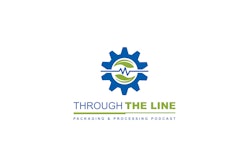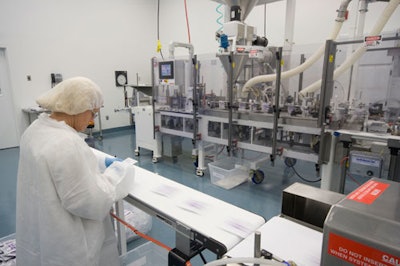
Headquartered in Royston, GA, PTI is a contract manufacturer and packager focusing on powder-based OTC and prescription drug products. The company's two facilities are equipped for both manufacturing and packaging operations and contain 22 packaging lines, including bottle filling, pouch filling, foil wrapping, and cartoning capabilities.
Healthcare Packaging (HCP) spoke with Tee Noland, PTI's director of business development, regarding the contract packaging landscape as well as packaging trends responsible for the company's recent machinery acquisitions.
HCP: What are the key issues and trends you've seen develop in the last few years in your business?
Noland: One of the trends we've seen is further reliance on contractors for a lot of packaging and manufacturing expertise. There's also further reliance on companies like us to do research and development for new products, so we're seeing more activities being outsourced to us and a shift in the expertise that used to reside with our clients and today resides with us.
HCP: What is the reason for this change?
Noland: There's so much cost-cutting going on and so much pressure on Big Pharma because they're not developing new products as rapidly as they once did. It's harder to get products approved, so the revenue's not growing, but they still want to expand their profitability. To do that they have to cut costs, and they've found that companies like Pharma Tech have a much leaner cost structure in place than they do.
We're seeing another trend: Several years ago, Big Pharma companies had a separate division for Rx and a separate division for OTC. Now, because of cost-cutting, they realize they don't need to maintain these separate overhead structures. They can merge OTC and Rx into one effort and still achieve a lot of the benefits that they were trying to achieve by separating them. Instead of relying on certain contractors for OTC and certain ones for Rx, they can come to one contractor for both types of products. So we're seeing more interest from our clients for us to do more things and to provide them a greater level of service in different types of products.
HCP: What impact has the economic downturn had on your business and your customers' outsourcing strategies?
Noland: We've been fortunate that we haven't had a major downturn in our business. Last year when there was some inventory that was cut pretty significantly by a lot of the big retailers, like Wal-Mart, we saw our volumes drop off quite a bit. But we've rebounded since then, and we've been able to bring in new business that has offset the reduction in volumes that we saw across the current business that we had. So we've grown, even though some of our older business has shrunk somewhat. The economic challenges are benefiting contractors because they're creating more incentive for a lot of the Big Pharma companies to use contractors to cut costs and consolidate resources.
HCP: During the current administration, the FDA appears to be getting more funding and personnel, and wielding more power. Do you agree with that, and what does that mean to your business and to your customers?
Noland: If the FDA “raises the bar” in a way that benefits the consumer, then it's good for everyone. As part of our continuous improvement efforts, we look to the FDA to elevate industry standards in a positive way. That said, I think that the FDA needs to be a partner to business, [which] are here to provide a service and product to meet the demand of the consumer. Of course, the products we provide need to be safe and effective. Hopefully the FDA doesn't lose sight of the bigger picture.
HCP: What developments do you see in terms of packaging materials in healthcare?
Noland: We're seeing more of an interest in patient compliance and ensuring that the consumer takes the right dose of product at the right frequency. That's been a big area. There's been a shift to more portable types of packaging, like pouches. Instead of buying a product you have to pour into a dose, you have a dose that's pre-measured in a pouch. It's more costly to the consumer, but they seem to prefer that format. There's also continued interest in tamper evidence, so just having that built into the package design so the consumer as well as our customers have the assurance that there hasn't been any contamination of the product throughout the supply chain. Package design also seems to be more of a focus and creating new bottle designs that make a product stand out more on the shelf.
HCP: What new packaging equipment have you purchased in the last year and why?
Noland: We purchased a good amount of blending and pouch-filling equipment. That's a big growth area for our business. In the last year we've acquired three new Bartelt horizontal form/fill/seal machines, and we're in the process of purchasing a rotary pouch-filling machine from Oystar Jones. We also expanded our manufacturing capabilities with two new blenders.
The new machinery is in response to the trend we're seeing in portable packaging. Also some pharmaceutical companies are realizing that they can capture additional market share of their product by formulating a powder version of the tablet version. The reason they're doing this is because some of the tablet products they have involve some pretty large pills to get the necessary dose, or they involve multiple tablets that you have to take multiple times per day. So instead of having to do that, we've supported the formulation of a powder product you can put into a pouch and take once a day instead of all these pills. You mix it will a glass of water, and it's a lot easier. Patient compliance is also driving the trend. Doctors don't even prescribe some of these products because they know they're so hard to take that people don't want to take them. Compliance becomes a major issue. So now they have an alternative. They can take this powder in a pouch, and it's easier for them.
In addition to the new equipment, we've built three new Class 100,000 clean rooms, which are rated for prescription drug products, and we're getting ready to build two more. They have dedicated HVAC systems, humidity monitoring and control, airlocks, and cleanable ceilings, walls, and floors. This was in response to an increase in our ingestible products business and more stringent production and GMP requirements. For example, we produce a laxative that used to be a prescription product and switched to OTC a few years ago. When the product switched, the company had to file a new drug application with FDA. It's a more regulated product than some of the other OTCs because it used to be Rx, so there's more documentation involved and validation scrutiny. We also produce a prescription drug product used for the treatment of cholesterol.
HCP: Looking ahead the next six to 12 months, how would you assess the business environment in packaging healthcare products? Do you plan to purchase any specific machinery?
Noland: It's a very bright future for contract manufacturers. I don't see things changing a lot for pharmaceutical companies in the near-term. Unfortunately, I don't see a lot of growth coming from the pipeline, and as a result I think they're going to be looking internally for ways to cut costs. I think contractors are one of the best solutions that they have in their toolbox. I think there's going to be more consolidation in the industry—not just on our customers' side (Big Pharma) but also on the contractor side. Part of the cost- cutting initiatives at Big Pharma include more of a focus on using fewer suppliers, and so I think there's going to be consolidation on the contractors' side as well as contractors attempting to merge and expand their offerings.
In terms of specific machinery, we're looking at purchasing a stick-pack machine. Again, instead of buying a big bottle, you buy a carton of stick packs, and you can take them as you're on the go. It's very portable and supports compliance because it's easy to open and mix. So it's something we've been pursuing because a lot of clients have expressed interest in that format. We just haven't found the right opportunity to justify purchasing one at this point. It's a logical format for powder to go into that we just don't have in our capabilities.
HCP: When you purchase packaging machinery, do you specify controls and automation for the equipment? Is that aspect of machinery becoming more important?
Noland: Yes to both questions. We have an automated approach in the processes that we have in place in our operations. So the more systems that talk to one another and make the machine run more smoothly or experience less downtime the better we can design the piece of equipment up front based on the specific needs of the product—and the less expense we'll have in labor on an ongoing basis. We have an engineering staff, which separates us from other contractors that can't afford to have an engineering staff on hand. A lot of smaller contractors will get a consultant or engineer as needed, but we have 22 packaging lines and a number of blending operations, so we have a need for a full-time staff of engineers that are implementing new equipment processes for new business as well as upgrading older equipment we have to keep it up to date and running efficiently.
HCP: Anything else you would like to add?
Noland: I think the stigma years ago was that outsourcing was something you did overseas. You went to India, China, or Mexico because it was cheaper, and a lot of our customers have done that. They found that the quality and service wasn't what they were getting when they did business in the U.S., so we're seeing a big shift away from overseas production to more domestic-based production. Our clients have learned from their experience that getting a low price doesn't mean you're saving money in the long run.
-Kassandra Kania, Contributing Editor
Healthcare Packaging (HCP) spoke with Tee Noland, PTI's director of business development, regarding the contract packaging landscape as well as packaging trends responsible for the company's recent machinery acquisitions.
HCP: What are the key issues and trends you've seen develop in the last few years in your business?
Noland: One of the trends we've seen is further reliance on contractors for a lot of packaging and manufacturing expertise. There's also further reliance on companies like us to do research and development for new products, so we're seeing more activities being outsourced to us and a shift in the expertise that used to reside with our clients and today resides with us.
HCP: What is the reason for this change?
Noland: There's so much cost-cutting going on and so much pressure on Big Pharma because they're not developing new products as rapidly as they once did. It's harder to get products approved, so the revenue's not growing, but they still want to expand their profitability. To do that they have to cut costs, and they've found that companies like Pharma Tech have a much leaner cost structure in place than they do.
We're seeing another trend: Several years ago, Big Pharma companies had a separate division for Rx and a separate division for OTC. Now, because of cost-cutting, they realize they don't need to maintain these separate overhead structures. They can merge OTC and Rx into one effort and still achieve a lot of the benefits that they were trying to achieve by separating them. Instead of relying on certain contractors for OTC and certain ones for Rx, they can come to one contractor for both types of products. So we're seeing more interest from our clients for us to do more things and to provide them a greater level of service in different types of products.
HCP: What impact has the economic downturn had on your business and your customers' outsourcing strategies?
Noland: We've been fortunate that we haven't had a major downturn in our business. Last year when there was some inventory that was cut pretty significantly by a lot of the big retailers, like Wal-Mart, we saw our volumes drop off quite a bit. But we've rebounded since then, and we've been able to bring in new business that has offset the reduction in volumes that we saw across the current business that we had. So we've grown, even though some of our older business has shrunk somewhat. The economic challenges are benefiting contractors because they're creating more incentive for a lot of the Big Pharma companies to use contractors to cut costs and consolidate resources.
HCP: During the current administration, the FDA appears to be getting more funding and personnel, and wielding more power. Do you agree with that, and what does that mean to your business and to your customers?
Noland: If the FDA “raises the bar” in a way that benefits the consumer, then it's good for everyone. As part of our continuous improvement efforts, we look to the FDA to elevate industry standards in a positive way. That said, I think that the FDA needs to be a partner to business, [which] are here to provide a service and product to meet the demand of the consumer. Of course, the products we provide need to be safe and effective. Hopefully the FDA doesn't lose sight of the bigger picture.
HCP: What developments do you see in terms of packaging materials in healthcare?
Noland: We're seeing more of an interest in patient compliance and ensuring that the consumer takes the right dose of product at the right frequency. That's been a big area. There's been a shift to more portable types of packaging, like pouches. Instead of buying a product you have to pour into a dose, you have a dose that's pre-measured in a pouch. It's more costly to the consumer, but they seem to prefer that format. There's also continued interest in tamper evidence, so just having that built into the package design so the consumer as well as our customers have the assurance that there hasn't been any contamination of the product throughout the supply chain. Package design also seems to be more of a focus and creating new bottle designs that make a product stand out more on the shelf.
HCP: What new packaging equipment have you purchased in the last year and why?
Noland: We purchased a good amount of blending and pouch-filling equipment. That's a big growth area for our business. In the last year we've acquired three new Bartelt horizontal form/fill/seal machines, and we're in the process of purchasing a rotary pouch-filling machine from Oystar Jones. We also expanded our manufacturing capabilities with two new blenders.
The new machinery is in response to the trend we're seeing in portable packaging. Also some pharmaceutical companies are realizing that they can capture additional market share of their product by formulating a powder version of the tablet version. The reason they're doing this is because some of the tablet products they have involve some pretty large pills to get the necessary dose, or they involve multiple tablets that you have to take multiple times per day. So instead of having to do that, we've supported the formulation of a powder product you can put into a pouch and take once a day instead of all these pills. You mix it will a glass of water, and it's a lot easier. Patient compliance is also driving the trend. Doctors don't even prescribe some of these products because they know they're so hard to take that people don't want to take them. Compliance becomes a major issue. So now they have an alternative. They can take this powder in a pouch, and it's easier for them.
In addition to the new equipment, we've built three new Class 100,000 clean rooms, which are rated for prescription drug products, and we're getting ready to build two more. They have dedicated HVAC systems, humidity monitoring and control, airlocks, and cleanable ceilings, walls, and floors. This was in response to an increase in our ingestible products business and more stringent production and GMP requirements. For example, we produce a laxative that used to be a prescription product and switched to OTC a few years ago. When the product switched, the company had to file a new drug application with FDA. It's a more regulated product than some of the other OTCs because it used to be Rx, so there's more documentation involved and validation scrutiny. We also produce a prescription drug product used for the treatment of cholesterol.
HCP: Looking ahead the next six to 12 months, how would you assess the business environment in packaging healthcare products? Do you plan to purchase any specific machinery?
Noland: It's a very bright future for contract manufacturers. I don't see things changing a lot for pharmaceutical companies in the near-term. Unfortunately, I don't see a lot of growth coming from the pipeline, and as a result I think they're going to be looking internally for ways to cut costs. I think contractors are one of the best solutions that they have in their toolbox. I think there's going to be more consolidation in the industry—not just on our customers' side (Big Pharma) but also on the contractor side. Part of the cost- cutting initiatives at Big Pharma include more of a focus on using fewer suppliers, and so I think there's going to be consolidation on the contractors' side as well as contractors attempting to merge and expand their offerings.
In terms of specific machinery, we're looking at purchasing a stick-pack machine. Again, instead of buying a big bottle, you buy a carton of stick packs, and you can take them as you're on the go. It's very portable and supports compliance because it's easy to open and mix. So it's something we've been pursuing because a lot of clients have expressed interest in that format. We just haven't found the right opportunity to justify purchasing one at this point. It's a logical format for powder to go into that we just don't have in our capabilities.
HCP: When you purchase packaging machinery, do you specify controls and automation for the equipment? Is that aspect of machinery becoming more important?
Noland: Yes to both questions. We have an automated approach in the processes that we have in place in our operations. So the more systems that talk to one another and make the machine run more smoothly or experience less downtime the better we can design the piece of equipment up front based on the specific needs of the product—and the less expense we'll have in labor on an ongoing basis. We have an engineering staff, which separates us from other contractors that can't afford to have an engineering staff on hand. A lot of smaller contractors will get a consultant or engineer as needed, but we have 22 packaging lines and a number of blending operations, so we have a need for a full-time staff of engineers that are implementing new equipment processes for new business as well as upgrading older equipment we have to keep it up to date and running efficiently.
HCP: Anything else you would like to add?
Noland: I think the stigma years ago was that outsourcing was something you did overseas. You went to India, China, or Mexico because it was cheaper, and a lot of our customers have done that. They found that the quality and service wasn't what they were getting when they did business in the U.S., so we're seeing a big shift away from overseas production to more domestic-based production. Our clients have learned from their experience that getting a low price doesn't mean you're saving money in the long run.
-Kassandra Kania, Contributing Editor



